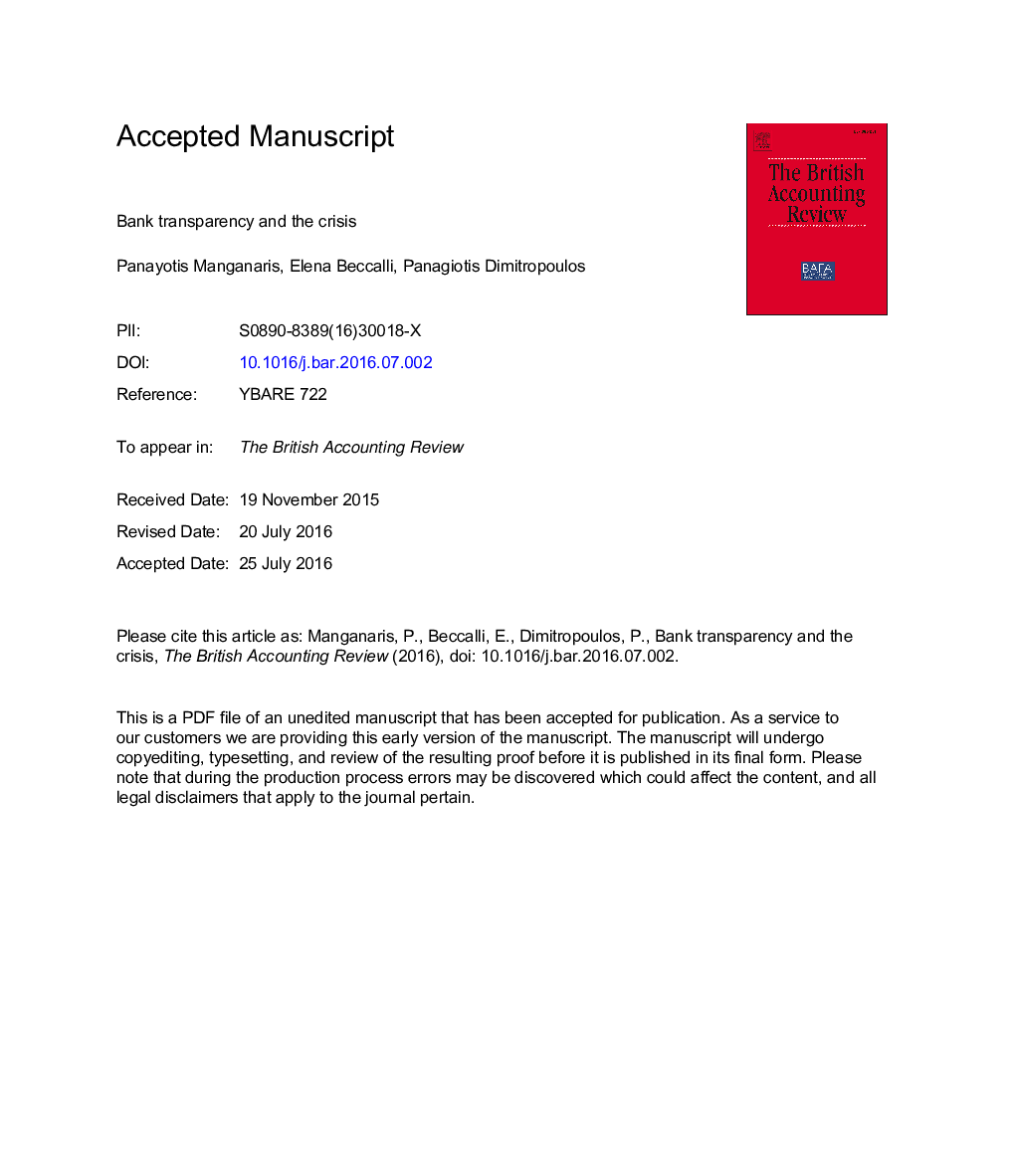| Article ID | Journal | Published Year | Pages | File Type |
|---|---|---|---|---|
| 5107535 | The British Accounting Review | 2017 | 49 Pages |
Abstract
This paper assesses the depth of transparency in the banking industry and the impact of the recent financial crisis. We interpret transparency in terms of conservatism and timeliness, as in Ball, Kothari, and Robin (2000, p. 2). We use a sample of European listed banks over 2005-2011 and apply three models to proxy for conservatism (Ball, Kothari, & Nikolaev, 2013; Nichols, Wahlen, & Wieland, 2009; Ball & Shivakumar, 2005) and two metrics to gauge timeliness (Raonic, McLeay, & Asimakopoulos, 2004; Ball, et al., 2000). Our findings do not document the existence of conservatism during the first years of mandatory IFRS induction in the European banking industry. However, the levels of conservatism significantly increased after the crisis outbreak (higher timeliness of loan loss provisions, timelier “bad news” recognition and asymmetrically increased negative accruals). Moreover, timeliness significantly increased after the crisis outset. This evidence on combined conservatism and timeliness suggests an attempt of banks to increase transparency following the financial crisis burst to mitigate the adverse consequences of the opaqueness typically characterising the industry.
Related Topics
Social Sciences and Humanities
Business, Management and Accounting
Accounting
Authors
Panayotis Manganaris, Elena Beccalli, Panagiotis Dimitropoulos,
